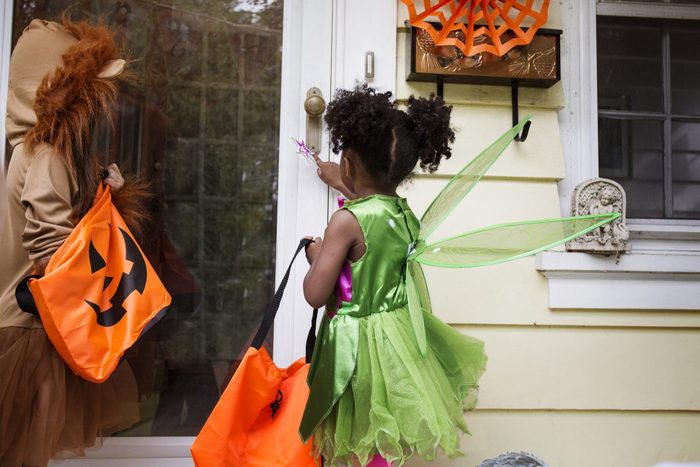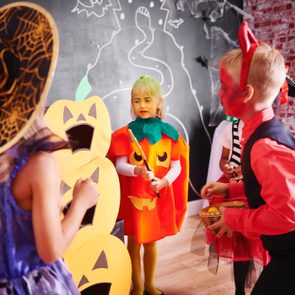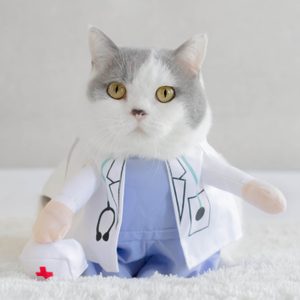What Time Does Trick-or-Treating Start?
Updated: Sep. 29, 2022

Times and guidelines may vary, but there are certain windows when you can expect the kiddos to be knocking on your door.
Trick-or-treating is one of the best parts of Halloween—and probably the most anticipated. Especially because when your kids come home with a bag full of Halloween candy, there’s that mouthwatering candy tax. If you have already snagged the best Halloween candy deals and one of the most popular Halloween costumes, you’re ready to go! But what time does trick-or-treating start? Since Halloween typically falls on a school day, you can usually expect the first trick-or-treaters to start taking the streets around 4 p.m., but when Halloween falls on a weekend like this year, the times can vary. Since the coronavirus pandemic is still going on, it’s important to stay up to date on your local guidelines according to the CDC as they may range and change as Halloween gets closer. The local protocol is especially important if you live outside one of these cities as the hours can fluctuate. Stay safe out there!
When does trick-or-treating start in the United States?
Atlanta: Typical trick-or-treating time is between 5 p.m. and 9 p.m. according to local news outlets.
Boston: Local news outlets say that neighborhood activities usually occur between 5 p.m. and 8 p.m.
Buffalo: Between 5 p.m. and 8 p.m. according to local news.
Charleston: The general window of recommendation is between 5:30 p.m. and 9 p.m.
Chicago: Festivities typically begin as early as 3 p.m. and end at 7 p.m.
Cincinnati: Local news outlets suggest the best time for trick-or-treating is between 6 p.m. and 8 p.m.
If you haven’t picked out the perfect outfit yet, check out these DIY Halloween costumes for kids for inspo.
Cleveland: The city’s official trick-or-treat festivities are usually held between 6 p.m. and 8 p.m., according to local news outlets.
Dallas: Local activities occur between 5 p.m. and 7 p.m.
Denver: This Colorado city kicks off trick-or-treating around 3:30 p.m. and ends around 7 p.m. on average.
Houston: Different zip codes within the city vary, but generally people began trick-or-treating around 5 p.m. with quiet street corners by 9 p.m.
Indianapolis: The Indy Star says that Halloween activities begin around 5:30 p.m. and end around 9 p.m. in some areas.
Los Angeles: Trick-or-treating generally begins around dusk and goes until 8:30 p.m. according to a local blog.
Milwaukee: Local news outlets suggest taking the streets between 1 p.m. and 4 p.m.
Philadelphia: Kids begin trick-or-treating between 6 p.m. and 8 p.m. says local news outlets.
Phoenix: Per local outlets, communities welcome trick-or-treaters between 5 p.m. and 7:30 p.m.
Pittsburgh: Local outlets say community festivities take place between 6 p.m. and 8 p.m.
New York City: The city has not released any information regarding trick-or-treating times as of yet.
San Antonio: Younger children typically start trick-or-treating as early as 4:30 p.m., while older kids tend to wait until around 7 p.m. The streets are quiet by 9 p.m. (or 10 p.m. at the latest) says local news outlets.
San Diego: The city has not released any information regarding trick-or-treating times as of yet.
San Jose: The city has not released any information regarding trick-or-treating times as of yet.
Seattle: The kiddos hit the streets around 4 p.m. until 7 p.m., according to NBC.
Washington, D.C.: Neighborhood activities typically occur between 5:30 p.m. and 9 p.m. according to local news outlets.
Now that you know what time to go trick-or-treating, check out these Halloween party ideas for a scary good time.



